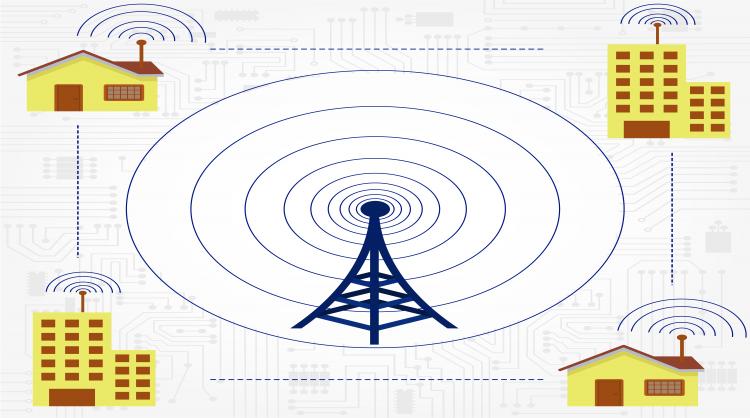Rural ILECs Request Price Caps for Special Access Services
June 23, 2017 | by Andrew Regitsky

Will rate-of-return (ROR) regulation for rural ILECs soon disappear? It clearly is on the ropes for the many small ILECs now using the Alternative Cost Model (ACAM) to recover their loop costs and receive Connect America Fund (CAF) support. These LECS are no longer in the NECA Common Line Pool and not subject to an authorized common line rate of return.
Moreover, with the authorized ROR decreasing from 11.25 to 9.75 percent and terminating end office rates moving to bill-and-keep, ROR regulation is becoming less of a factor for traffic-sensitive switched access rates. That means for rural ILECs, only their special access services (DS1, DS3) currently face ROR regulation with no end in sight. Some parties want that to change.
In a Petition For Rulemaking (Petition) filed on May 25, 2017 in Docket No. 17-144, ITTA and US Telecom request that rate-of-return carriers using the ACAM have the option to opt into the price cap regulation adopted in the FCC’s recent Business Data Services Order for their DS1 and DS3 services subject to certain conditions discussed below.
The Petitioners argue that the burdens of ROR regulation make little sense as rural ILECs increasingly utilize incentive-based regulation:
Continued compliance with rate-or-return-based rate regulation, including tariffing, tariff review plans, cost studies, and associated requirements, entails significant costs that are difficult for model-based rate-of-return carriers to recover in the competitive marketplace of BDS. For carriers receiving model-based support for universal service, these costs now are incurred only for BDS. In addition, the incentive of a model-based rate-of-return carrier to invest in facilities capable of providing robust, modern BDS and making the transition to an Internet Protocol based network is undermined because of the inability to flexibly meet customer needs. Regulatory rigidity harms competition, and thus imposes unreasonable costs on customers. For model-based rate-of-return carriers, these costs can exceed the benefits of rate-of-return regulation. Conversely, price cap regulation of TDM-based channel termination services of less than 50 Mbps offered in non-competitive counties holds the promise of producing a better outcome for some model-based rate-of-return carriers. (petition, p. ii).
If model-based ROR ILECs are governed under price caps, almost all their markets would be classified as non-competitive, therefore, their DS1 and DS3 channel terminations would be regulated based on ILEC Phase I pricing flexibility rules. Volume and term discounts would be permitted, along with individual contract tariffs made available to similarly situated customers, with tariffs permitted to change on one day notice.
In addition, the rural ILECs would have an X-factor of 2.0 percent for their DS1 and DS3 services. Each year in their Annual Access Filings (AAFs), these ILECs would have to reduce their special access rates by 2 percent plus or minus inflation as measured by the Gross Domestic Product-Price Index (GDP-PI).
The Petitioners request that price cap regulation be optional, to permit carriers to remain in the NECA Traffic Sensitive Pool (with BDS services removed) if they choose. This reflects the fact that originating traffic sensitive rates along with terminating tandem-switched transport rates remain under ROR regulation and it is much easier for some companies to rely on NECA to develop cost-based rates.
All of these non-BDS rate-of-return regulated services are subject to their own detailed regulations and customer safeguards that were recently adopted by the Commission. There is no reason to upset the business expectations and transition plans permitted by these regulations, which represent a balancing of competing interests and which were adopted pursuant to detailed public interest evaluations. Upsetting these carefully crafted regulations for model-based rate-of-return carriers would undoubtedly raise complex questions that would take time to evaluate and resolve and entail a real risk of unintended harm to rural rate-of-return carrier businesses, networks, and customers. (id., p. 13).
Industry comments on the Petition are due on July 6, 2017, with reply comments due on July 21, 2017. Please note that ROR ILECs that have not selected model-based CAF support are not impacted by this Petition.
The feeling here is that the Petition is a good idea. Allowing rural ILECs to price their DS1 and DS3 services through price caps would provide them with more pricing freedom and allow them to become more competitive. As NECA points out in its 2017 Annual Access Filing, ROR ILECs are losing special access revenues annually to competitors. Price caps would enable them to be more responsive to customers while still price-controlling the one area (channel terminations to end users) in which they maintain a legacy advantage.
Of course, rate-of-return regulation will never go away completely if some ROR ILEC access charges are never required to move to bill-and-keep. And as we have mentioned before, we see no sign that the Commission plans on changing the status quo any time soon.

